28. Graun, 'Der Tod Jesu.'

29. Hummel, 'Pianoforte School.'

When applied to the last note but one of a final cadence the appoggiatura should, according to Emanuel Bach, be short. But later composers have usually preferred the long appoggiatura under these circumstances, especially when accompanied by the seventh of the chord (Ex. 30), or by a part moving in sixths with it (Ex. 31). Beethoven has even lengthened it beyond the value of the principal note, but in this case it is always written as an ordinary note (Ex. 32). When however, in Haydn, Mozart, and all later composers, the final note of the cadence is anticipated, the appoggiatura to the preceding note is short (Ex. 33).
30. Mozart, First Mass.

31. Haydn, Symphony in E♭.

32. Beethoven, Op. 30, No. 3.
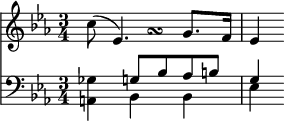
33. Mozart, Sonata in F.
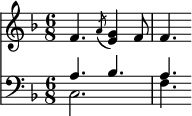
In vocal recitative, at the close of a phrase, or of a section of a phrase, an appoggiatura is often introduced which has the full value of the principal note, and indeed appears in its stead (Ex. 34); such an appoggiatura is often not indicated, but is left to the discretion (or want of discretion) of the singer (Ex. 35). It is more appropriate at the close of the whole recitative than after its component phrases, and is especially so when the melody descends a third or a fourth (Ex. 36).
34. Weber, 'Der Freischütz.'
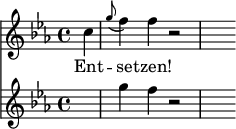
35. Haydn, 'The Seasons.'

36. Bach, 'Passionsmusik.'

Handel, 'Messiah.'
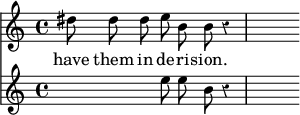
When a trill or other ornament appears in combination with an appoggiatura, the latter is long, and the trill is performed on the principal note or on the appoggiatura, according as it is placed above the one or the other (Ex. 37).
| 37. Haydn, Sonata in F. | Türk. |
 |
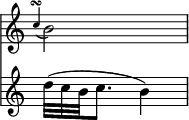 |
| [Time signature changed per App. p.523.] |
The proper execution of the appoggiatura seems to be most doubtful in the group in which the note bearing the appoggiatura is followed by two or four notes of half its own value. In the majority of such cases the appoggiatura should be long (Ex. 38), and particularly in smoothly flowing passages in moderate or slow tempo (Ex. 39). But there are numerous exceptions, as for example when the employment of the long appoggiatura would alter the rhythm of the passage

